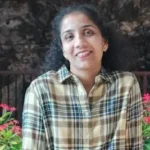Three scientists on Tuesday won the Nobel Physics Prize, including the first woman to receive the prestigious award in 55 years, for inventing optical lasers that have paved the way for advanced precision instruments used in corrective eye surgery.
Arthur Ashkin of the United States won one half of the nine-million Swedish kronor (about $1.01m or 870,000 euros) prize, while Gerard Mourou of France and Donna Strickland of Canada shared the other half.
Strickland is just the third woman to win a Nobel Physics Prize since it was first awarded in 1901, while Ashkin, 96, is the oldest person to win a Nobel, beating out American Leonid Hurwicz who was 90 when he won the 2007 Economics Prize.
Ashkin was honoured for his invention of “optical tweezers” that grab particles, atoms, viruses and other living cells with their laser beam fingers.
A major breakthrough came in 1987 when Ashkin used the tweezers to capture living bacteria without harming them, the Academy noted.
According to Ian Musgrave of Britain’s Central Laser Facility, optical tweezers make it possible to use lasers to manipulate very small objects, such as beads of glass or oil droplets, to position them precisely or control the environment around them.
The tweezers can for example be used to “trap droplets from asthma inhalers to improve the efficiency of delivery through the lungs,” he said.
Ashkin made his discovery while working at AT&T Bell Laboratories from 1952 to 1991.
‘Most intense laser pulses ever’
Meanwhile Mourou, 74, and Strickland, 59, won for helping develop a method to generate ultra-short optical pulses, “the shortest and most intense laser pulses ever created by mankind,” the jury said.
Their technique is now used in corrective eye surgery, among other things.
Mourou was most recently affiliated with France’s Ecole Polytechnique, while Strickland, who was his student at the University of Rochester in New York, is a professor at the University of Waterloo in Canada.
Contacted by AFP, Mourou said he was getting ready for his daily swim just before noon on Tuesday when he got the call from the Academy.
“You don’t expect it. You can imagine it, but when it actually happens, it’s different,” he said, adding that his day had turned out “crazy”.
Laser research has been honoured with Nobels on several occasions, including the 1964 physics prize and the 1999 chemistry prize.
Women are ‘out there’
Meanwhile, speaking by phone to the Academy, a moved Strickland said she was thrilled to receive the Nobel prize that has been the least accessible for women.
“We need to celebrate women physicists because they’re out there… I’m honoured to be one of those women.”
Before her, only Marie Curie and Maria Goeppert Mayer had won the physics prize, in 1903 and 1963 respectively.
The Royal Swedish Academy of Sciences has in the past lamented the small number of women laureates in the science fields in general.
It has insisted that it is not due to male chauvinism bias on the award committees, instead attributing it to the fact that laboratory doors were closed to women for so long.
“It’s a small percentage for sure, that’s why we are taking measures to encourage more nominations because we don’t want to miss anyone,” the head of the Academy, Goran Hansson, said on Tuesday.
On Monday, two immunologists, James Allison of the US and Tasuku Honjo of Japan, won this year’s Nobel Medicine Prize for research into how the body’s natural defences can fight cancer.
The winners of the chemistry prize will be announced on Wednesday, followed by the peace prize on Friday. The economics prize will wrap up the Nobel season on Monday, October 8.
For the first time since 1949, the Swedish Academy has postponed the announcement of the 2018 Nobel Literature Prize until next year, amid a #MeToo scandal and bitter internal dispute that has prevented it from functioning properly.







